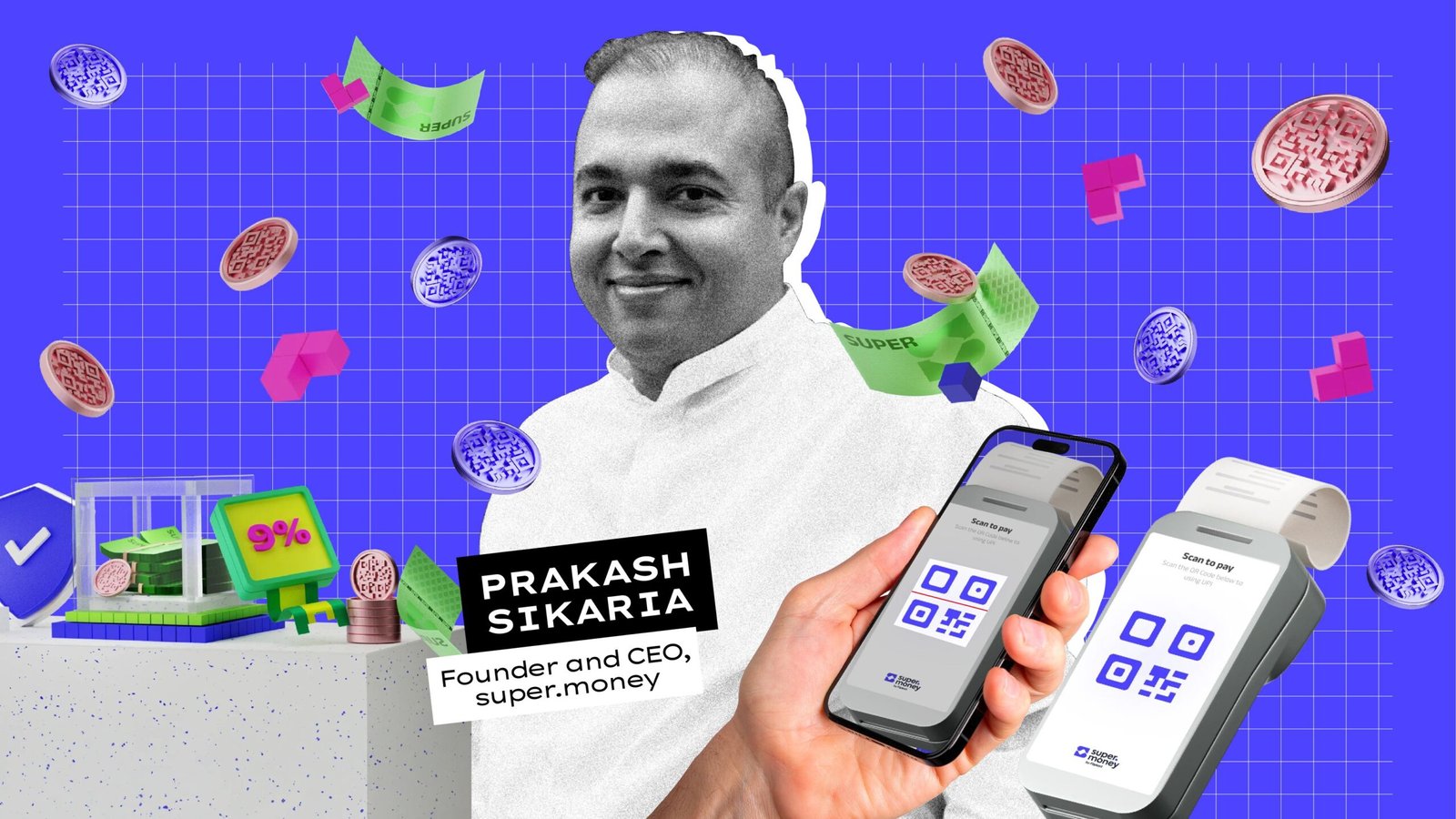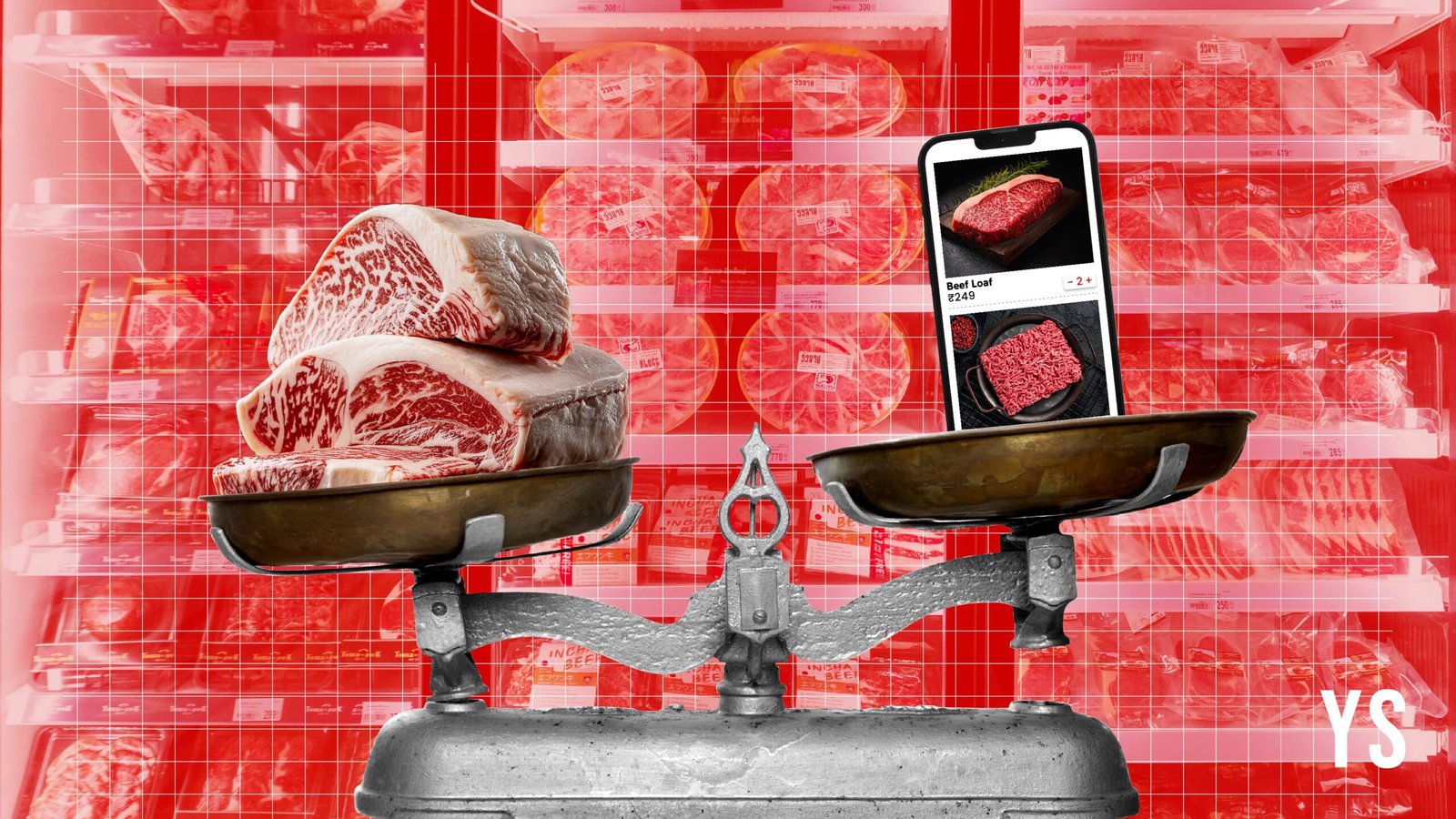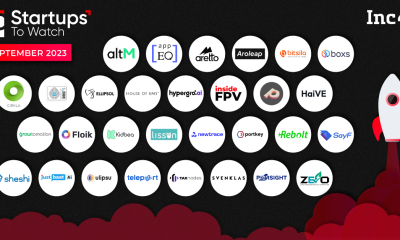Startup
Flipkart-backed super.money joins UPI app race

Ecommerce giant -backed financial services platform has now rolled out its credit-first UPI app to all users on Android, after its beta launch in June this year.
The fintech platform, structured as a Flipkart subsidiary, will also roll out its credit-on-UPI product after two weeks, said a company executive.
“In the beta phase, the RuPay card and bank account-linked UPI service was open to all users and saw 1 million downloads and over 10 million transactions … The credit-on-UPI product was limited to a few hundred users and we have started waitlisting users for the roll-out,” Prakash Sikaria, Founder and CEO of super.money told YourStory.
Sikaria had served as senior vice president heading growth at Flipkart for eight years, driving marketing, ads and Shopsy. He was also on the board of travel platform Cleartrip before building super.money.
Backed by Flipkart, with a separate cap table and ESOP structure, super.money will fill the gap left by the demerger of PhonePe from the Flipkart Group into a separate entity in April, 2023. The entity currently has a team of 80 people with 70% of the staff engaged in product development and engineering.
However, super.money does not want to be a lifestyle app similar to CRED or a payment app similar to PhonePe, which currently commands nearly half the market share of UPI payments in terms of transaction volumes.
“By December 2024, our aim is to be among the top five apps in the UPI space. As we see the market currently, by the end of the year there will be four to five players clocking nearly 100 million transactions on their platforms, and the market share will see better distribution over the next few years,” said Sikaria.
UPI transaction volumes stood at 14.4 billion for July 2024, clocking Rs 20.64 trillion crore in value.
Sikaria said that the fintech platform was focused on the digital native young customers, leveraging Flipkart’s distribution to reach out to the target group.
“The instance of offline payments is higher than online and hence UPI increases the relevance of the product for the customers. We are looking to acquire the customers through Flipkart and our own marketing, who will leave a greater footprint on the super.money app through offers, financial product use, gamification and other strategies,” he added.
The platform will introduce multiple financial products for consumers over the next two to three months, including fixed deposit products, personal loans, as well as other credit and payment products.
While the app is focused on consumer-facing financial products and product market fit for its UPI-led products, the platform is likely to explore business-to-business financial products at a later date, said Sikaria.
Startup
Hearzap acquires majority stake in Speech and Hearing Care

Hearing care provider Hearzap has acquired a majority stake in Speech and Hearing Care for an undisclosed amount.
Speech and Hearing Care is a renowned player in Bihar and Jharkhand. Hearzap funded the acquisition entirely through internal cash flows. The deal is expected to drive Hyderabad-based Hearzap’s revenue past ₹100 crore this fiscal year, securing a 30% market share in key regions.
“This expansion ensures access to top-quality hearing care provided by professionally trained audiologists and supports the company’s target of expanding to 250 stores by 2026, doubling its growth by exploring more partnerships,” said the company in a press note.
Speech and Hearing Care has strong presence in cities like Patna, Ranchi, and Dhanbad. The acquisition will facilitate integration of operations of the two companies and enable Hearzap to offer services in the hearing care industry in the eastern region.
“By combining our advanced technology with the local expertise of Speech and Hearing Care, we are set to elevate industry standards and provide even better service to our customers,” said S Raja, Founder and Managing Director of Hearzap.
Hearzap raised around Rs 50 crore in a funding round from 360 One Asset Management Ltd. in November 2023. It operates over 130 locations nationwide.
Startup
Catch and Release: Why are online meat startups still small fry in domestic markets?

Meat buying has traditionally been a very hands-on process. Meat eaters generally prefer to personally select the cut, inspect the freshness of the catch, and understand its procurement tactics.
The pandemic brought in a new wave of online-first meat and seafood startups looking to make their mark on the sector, riding on the surge in funding into the Indian startup ecosystem between 2020 and 2022.
Meat distributor Licious turned into a D2C unicorn in 2021, after raising $52 million in its Series G round. It has raised $490 million in funding so far and has a valuation of $1.47 billion as on September 21, 2023, according to Tracxn. Meanwhile, its peer, FreshToHome, also raised $104 million in funding led by Amazon Sambhav Venture Fund in 2023, taking its cumulative funding to $286 million.
However, the meat startup sector’s fortunes has since taken a turn for the worse: consumer preferences have largely reverted back, and online meat and seafood retailers have either had to wind down their operations or continue with heavy losses with zero to little gains to show for it in the topline.
Licious clocked a 9.6% growth in its operating income to Rs 747.7 crore during FY23 from Rs 682.5 crore in FY22. It posted a loss of Rs 500 crore during the same period, marginally up from Rs 485 crore a year ago.
Meanwhile, FreshToHome recorded a revenue of Rs 110.3 crore, resulting in a loss of Rs 409.5 crore.
FreshtoHome did not respond to YourStory’s request for comment.
Expensive cold chain solutions, too much competition in a saturated market, unpredictable pricing, and ultimately, a lack of sufficiently appealing value additions to draw in a larger consumer base are just some of the challenges that dog online-first players, and are compelling them to look at alternative methods to bolster their bottomline.
Muddy waters
One of the biggest problems faced by online-first startups in the domestic seafood and meat market has been their inability to effectively disrupt the traditional supply chain to customers.
While consumers may have moved towards online channels for the convenience of delivery, especially during a lockdown, they now seek physical touchpoints to verify product freshness and that the meat cuts are processed in clean and hygienic conditions.
Mandrita, a Bengaluru-based Product Manager, says, she prefers shopping for her fish specifically from the nearby HAL market as opposed to ordering online.
“There is a larger variety to pick from and you get the option of choosing from a variety of sizes. While I do have to clean the meat afterwards, I know it is freshly cut and sold, moreover it is easily 20% cheaper than online alternatives,” she adds.
This consumer preference, combined with competition from FMCG brands like Godrej, Venky’s, and Nandus, makes climbing the profit peak a little too difficult for the meat startups.
Neighborhood stores do not invest in high-tech tech stack and cold chain infrastructure solutions, allowing for lower operational costs, which in turn enable them to sell at a lower price—a liberty online meat brands cannot afford.
Most players who try to reach their customers through Foodhalls and grocery marts just do it for the brand positioning, as these placements come with steep margins, explains Mark Alzawahra, MD and Founder of seafood wholesaler Catch Of Norway Seafood. Commission fees for Nature Baskets, Foodhalls, and the likes can go as high as 40% and in very rare cases it will go under 25% after hard negotiations, he adds.
Since branded cuts on grocery store shelves are too expensive, online food startups have had to go back to industry roots and set up brick and mortar shops, which come with high capex requirements and fewer neighborhoods which can absorb expensive meat outlets.
As a dire example of this, Chennai-based meat startup Fipola was forced to cease its operations in February 2023, when it failed to raise funds after its aggressive offline expansion.
What’s the catch?
To combat the crunch, meat players are shifting to alternatives to reach customers directly through brick and mortar outlets, including shifting customer bases to supply to businesses (B2B), or looking to export to other international markets.
Typically, in the food industry, clients of a B2B business include restaurants, hotels, caterers, or other marketplaces that place orders.
An increasing number of online meat startups are pivoting to this model to keep revenue up, as is the case for online seafood firm Captain Fresh, which sources directly from farms and fishermen and distributes to other retailers.
“This industry doesn’t need a B2C channel or a brand, because there is already a lot of real estate that the world has allocated for this product. If you walk into a retail chain across US or Europe, close to 30-35% of the overall floor space is allocated for meat, seafood,” says Utham Gowda, Founder, Captain Fresh.
Early on, Captain Fresh realised that a B2B channel was the only scope for growth in this industry. It later shifted its focus entirely to a B2B model outside of India.
Meanwhile, Gurugram-based ZappFresh sees a nearly 50-50 distribution in its B2B and direct-to-consumer (D2C) channels. It plans to clock a revenue of Rs 160 crore in FY24-FY25 with a significant jump in profit after tax, something its peers are yet to manage.
“While offline may look very promising and lucrative, it is extremely complex to crack that as well. And running and owning a store may not be the right format to build a profitable business in this space,” notes Deepanshu Manchanda, Co-founder and CEO of Zappfresh.
“As a business, you would want to liquidate the stock in time, it is a challenge to hold the inventory for a long period especially when the product is perishable. A B2B channel allows us to liquidate unsold inventory and bring more equilibrium across the board,” he adds.
Moreover, while seafood is a price-sensitive commodity, the industry, however, works on a mostly fixed-price basis. Therefore it is crucial for distributors to have a large enough base to mitigate any fluctuations in the distribution chain on the retail level.
Fluctuating market prices is a concern, especially for premium seafood like salmon, where market prices update every week globally.
“In India, domestic seafood prices are subject to daily or weekly fluctuations, largely influenced by seasonality, weather conditions, and availability of appropriate sizes to be caught and sold. Since hotels and restaurants update their menus quarterly or semi-annually, they prefer to enter into contracts to maintain price stability and stay competitive,” Alzawahra says.
A large base requires an even larger logistics channel. It is particularly difficult when the commodity is prone to spoilage if not stored properly and has a short shelf life.
Industry executives believe that a fragmented cold chain is one of the biggest challenges that needs to be addressed, as it allows companies to establish equilibrium with fluctuations in pricing and food inflation.
Long way from home
With the domestic market fraught with so many challenges, seafood players are looking towards thicker wallets across the sea.
Seafood is one of the biggest categories of export in the country. India exported 17,81,602 metric tonnes of seafood worth Rs 60,523.89 crore ($7.38 billion) during 2023-24; and exports improved 2.67% in quantity terms during the same period. The USA and China are the major importers of India’s seafood, according to the Indian Ministry of Commerce & Industry.
Online startups are vying to cash in on this significant revenue stream. The Indian market accounts for less than 10% of Captain Fresh’s total revenue. Its peer, FreshToHome, which picked up its latest bag of funds to expand its GCC and international operation, is also relying heavily on its global businesses.
“The take rates, the margin profile that you have in the international markets is very different compared to what you have in the Indian market. And if you have access to supply, you are better off chasing markets where monetisations are higher compared to markets like India,” adds Captain Fresh’s Gowda.
Meanwhile, Zappfresh, which recently acquired Mumbai-based Bonsaro and Bengaluru native Dr. Meat to expand its operation across Western and Southern regions, respectively, is now looking to expand to the Middle East in a format similar to its domestic markets.
Most of the biggest buyers globally in the meat sector are hotels and restaurants, and this provides the bulk of the volume for imported meat and seafood.
“The feasibility of online models in global markets depends on several factors. For one, the ability to adapt to diverse regulatory requirements and establish a reliable cold chain infrastructure is crucial,” says Prateek Toshniwal, Partner–MICS International & Co-founder, IVY Growth, and an investor in Zappfresh.
“Additionally, leveraging online platforms allows for efficient market entry with lower overhead compared to traditional retail setups,” he notes.
Startup
Bessemer Venture Partners pares 13.5% stake in Medi Assist for Rs 580 Cr

California-based has pared a 13.5% stake in Medi Assist Healthcare Services for Rs 580 crore via open market transactions, while Goldman Sachs, Morgan Stanley, and Societe Generale (SocGen) picked up stake in the company.
Promoter Bessemer Venture Partners, through its arm Bessemer India Capital Holdings II, offloaded 94,90,258 shares or 13.5% stake in Medi Assist Healthcare Services, according to the block deal data on the National Stock Exchange (NSE). With this, Bessemer Venture Partners’ stake in Medi Assist has come down to 15.72% from 29.22%.
The shares were sold at an average price of Rs 611.70 apiece, taking the transaction value to Rs 580.52 crore.
Novo Holdings A/S, a public shareholder, also sold 5 lakh shares of Medi Assist Healthcare Services at the same price, according to the NSE data.
Invesco Mutual Fund (MF), ICICI Prudential MF, HDFC MF, Aditya Birla Sun Life Insurance, Citigroup Global Markets Mauritius, , Morgan Stanley, Capital Group, SocGen and SBI Life Insurance were among the buyers of Medi Assist Healthcare Services’ shares.
On Tuesday, shares of Medi Assist Healthcare Services fell 1% to close at Rs 611.70 apiece on the NSE.
-

 Startup Stories11 months ago
Startup Stories11 months agoWhy Millennials, GenZs Are Riding The Investment Tech Wave In India
-

 Startup Stories11 months ago
Startup Stories11 months agoStartups That Caught Our Eyes In September 2023
-

 Startup Stories11 months ago
Startup Stories11 months agoHow Raaho Is Using Tech To Transform India’s Fragmented Commercial Trucking
-

 Startup Stories10 months ago
Startup Stories10 months agoMeet The 10 Indian Startup Gems In The Indian Jewellery Industry’s Crown
-

 Crptocurrency6 months ago
Crptocurrency6 months agoLither is Making Crypto Safe, Fun, and Profitable for Everyone!
-

 Startup Stories11 months ago
Startup Stories11 months agoHow Volt Money Is Unlocking The Value Of Mutual Funds With Secured Lending
-

 E-commerce11 months ago
E-commerce11 months agoTop Online Couponing Trends To Watch Out For In 2016
-

 Startup Stories11 months ago
Startup Stories11 months agoWhy Moscow-Based Kladana Considers Indian SME Sector As The Next Big Market For Cloud Computing




